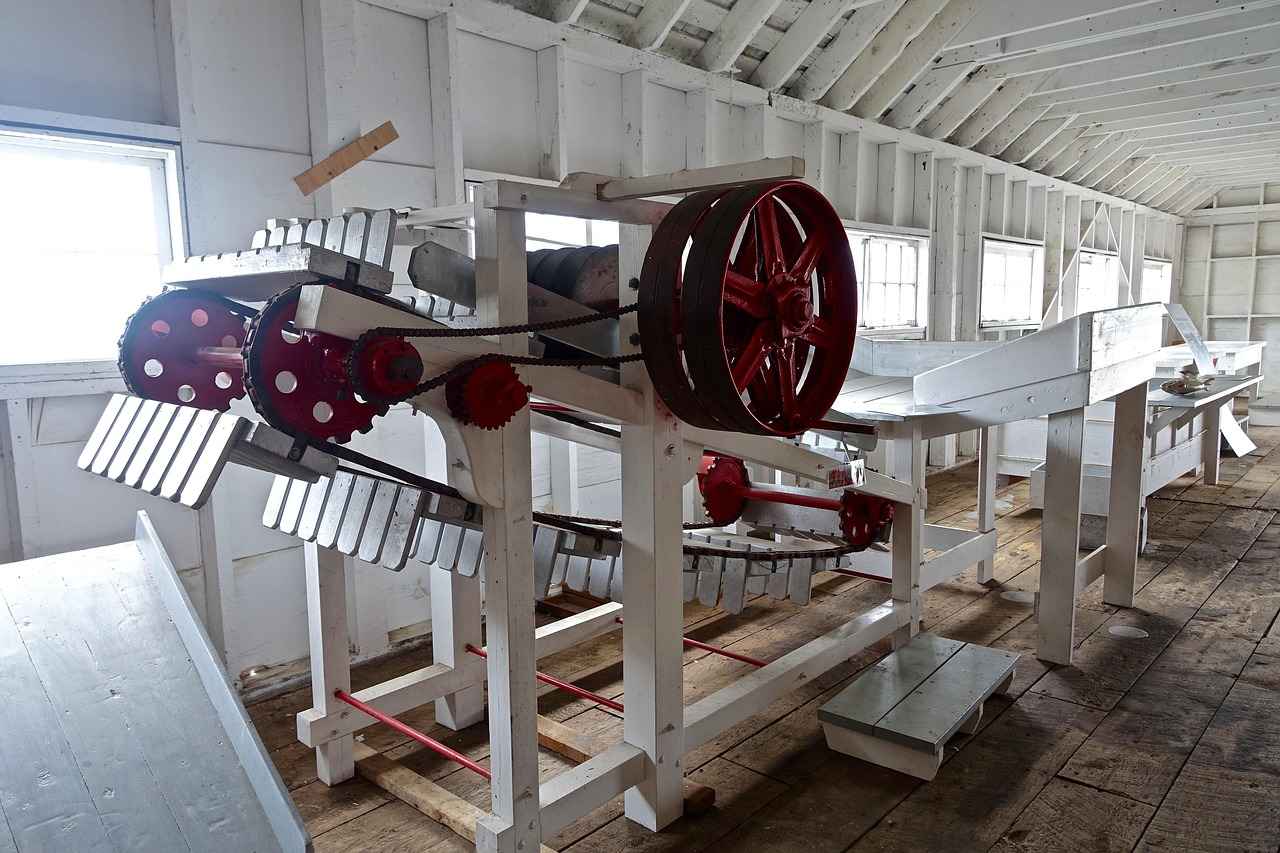The Honda Accord is one of the most popular midsize sedans in the automotive market, known for its reliability, performance, and advanced technology. This article explores the manufacturing locations of the Honda Accord, detailing the production process, the significance of these facilities, and how they contribute to Honda’s global operations.
The Honda Accord is primarily manufactured in the United States and Japan, with additional facilities in countries like Canada and China. Each of these locations plays a crucial role in the overall production process, ensuring that the Accord meets the high standards expected by consumers worldwide. The U.S. facilities are particularly significant due to their proximity to one of the largest markets for Honda vehicles.
The U.S. is a major production hub for the Honda Accord due to its substantial market demand. The American consumer market appreciates the blend of quality and affordability, making it essential for Honda to maintain a strong manufacturing presence in the region. Factors such as logistics efficiency and local employment also influence this strategic choice, allowing Honda to respond swiftly to market changes.
- Marysville Plant, Ohio: This plant is one of the oldest Honda manufacturing sites in the U.S. and plays a pivotal role in Accord production.
- Lincoln Plant, Alabama: Known for its advanced assembly techniques, this facility contributes significantly to the overall output of the Accord.
The Marysville plant has been a cornerstone of Honda’s U.S. operations since its inception in 1982. With a production capacity of over 200,000 vehicles annually, the plant employs cutting-edge manufacturing technologies and practices. This facility not only assembles the Accord but also serves as a training ground for Honda employees.
Located in Alabama, the Lincoln plant is integral to the assembly of the Honda Accord. This facility utilizes advanced robotics and automation to enhance production efficiency and quality. The plant’s strategic location also allows for easy distribution across the southeastern U.S., thereby reducing transit times.
Manufacturing the Honda Accord in the U.S. offers numerous advantages. These include:
- Reduced Shipping Costs: Proximity to the market lowers transportation expenses.
- Quick Response to Market Demand: Local production allows Honda to adapt swiftly to consumer preferences.
- Job Creation: Manufacturing plants provide thousands of jobs, contributing to local economies.
Japan remains a vital location for Honda Accord production, known for its advanced manufacturing techniques and stringent quality control measures. The Japanese facilities often serve as testing grounds for new technologies and processes that can later be implemented in U.S. plants.
Japanese Honda plants are renowned for their focus on innovation. Techniques such as lean manufacturing and the use of smart technology enhance production efficiency. These innovations not only improve the quality of the Accord but also reduce waste and production costs.
Labor practices can vary significantly between Honda’s U.S. and Japanese facilities. In Japan, there is a strong emphasis on teamwork and continuous improvement, while U.S. plants often adopt more flexible labor practices. This section explores how these differences affect production efficiency and employee satisfaction.
Apart from the U.S. and Japan, Honda has manufacturing facilities in various other countries, including Canada and China. These locations help diversify production and mitigate risks associated with market fluctuations.
Honda’s Canadian facilities also play a role in Accord production. By leveraging Canada’s skilled workforce and favorable trade agreements, Honda enhances its manufacturing capabilities and supports the overall production network.
Global manufacturing strategies significantly affect the Honda Accord’s production and distribution. Honda balances local and international operations to meet consumer demand efficiently while maintaining high-quality standards across all production sites.

What Are the Primary Manufacturing Locations for the Honda Accord?
The Honda Accord is one of the most popular midsize sedans globally, known for its reliability, fuel efficiency, and advanced technology. Understanding where the Honda Accord is manufactured is crucial for consumers and enthusiasts alike. This article delves into the primary manufacturing locations for the Honda Accord, focusing on their significance and the intricate manufacturing processes involved.
The Honda Accord is primarily produced in two major countries: the United States and Japan. Each location plays a vital role in the overall production strategy of Honda, contributing to the vehicle’s quality and availability in global markets.
- United States: The U.S. is home to several Honda manufacturing plants, with the most significant located in Marysville, Ohio and Lincoln, Alabama. These facilities are crucial for meeting the high demand for the Accord in North America.
- Japan: Honda’s home country remains a key site for production, utilizing advanced manufacturing techniques and technologies that have been honed over decades.
- Other Countries: Honda also has manufacturing operations in Canada and a few other select countries, which support the global supply chain and help meet international demand.
The U.S. serves as a significant production hub for the Honda Accord due to several factors:
- Market Demand: The U.S. market has a substantial appetite for the Accord, making it essential for Honda to produce vehicles close to its largest consumer base.
- Job Creation: Manufacturing in the U.S. creates thousands of jobs, contributing to the local economy and supporting communities.
- Logistics Efficiency: Producing vehicles domestically reduces shipping costs and time, allowing for a more agile response to market changes.
Japan remains a cornerstone of Honda’s manufacturing strategy. The Japanese plants are renowned for their innovative technologies and lean manufacturing practices. These facilities often serve as testing grounds for new production techniques that can later be implemented in U.S. plants.
Japanese Honda plants are at the forefront of manufacturing innovations, including:
- Automation: Advanced robotics are utilized to enhance precision and efficiency in production.
- Quality Control: Stringent quality control measures ensure that every Accord meets Honda’s high standards before it reaches consumers.
Labor practices vary significantly between Honda’s U.S. and Japanese facilities. In Japan, there is a strong emphasis on teamwork and continuous improvement, which fosters a culture of innovation. Conversely, U.S. plants focus on flexibility and responsiveness to market needs, adapting labor practices to enhance productivity.
Apart from the U.S. and Japan, Honda has established manufacturing facilities in various other countries, including Canada and Mexico. These plants play a critical role in the global supply chain, further enhancing Honda’s production capabilities.
Honda’s Canadian facilities provide several advantages:
- Geographical Proximity: Being close to the U.S. market allows for efficient distribution and supply chain management.
- Skilled Workforce: Canada boasts a highly skilled labor force, contributing to the overall quality of production.
Honda’s global manufacturing strategy allows the company to balance local production with international supply chains. This approach ensures that the Honda Accord remains competitively priced while meeting diverse consumer demands across different markets.

Why Is the United States a Major Production Hub for Honda Accord?
The Honda Accord has long been a staple in the American automotive market, and its production in the United States is a testament to the country’s significant demand for this popular sedan. This article explores the reasons why the U.S. has become a major production hub for the Honda Accord, emphasizing various factors that make this strategic choice beneficial for Honda.
One of the primary reasons for the United States’ pivotal role in Honda Accord production is the high market demand. The Accord has consistently ranked among the top-selling vehicles in the U.S., appealing to a wide range of consumers due to its reliability, fuel efficiency, and advanced technology. This consistent demand allows Honda to maintain a steady production flow within the country.
Manufacturing the Honda Accord in the U.S. allows Honda to be closer to its consumers. This proximity leads to shorter supply chains, which significantly reduces shipping times and costs. By producing vehicles closer to the market, Honda can quickly respond to changes in consumer preferences and demand fluctuations, enhancing overall production efficiency.
Producing the Honda Accord in the United States also brings considerable economic benefits. The creation of jobs in manufacturing plants contributes to local economies, fostering community development. Honda supports thousands of jobs directly and indirectly, which in turn boosts the local economy and enhances the company’s image as a responsible corporate citizen.
Honda’s U.S. manufacturing facilities are equipped with advanced technologies that ensure high standards of quality control. The company implements rigorous testing and quality assurance processes to maintain the Accord’s reputation for durability and reliability. This focus on quality helps Honda meet the expectations of American consumers, further solidifying the Accord’s market position.
Innovation is at the heart of Honda’s production strategy. U.S. facilities often serve as testing grounds for new technologies and manufacturing processes. By integrating innovative practices into the production of the Accord, Honda not only improves efficiency but also enhances the vehicle’s features, ensuring it remains competitive in a rapidly evolving market.
The skilled workforce in the U.S. plays a crucial role in the production of the Honda Accord. Honda invests significantly in training and development programs for its employees, ensuring they are equipped with the latest skills and knowledge. A well-trained workforce contributes to higher quality production and fosters a culture of continuous improvement.
Manufacturing the Honda Accord in the U.S. offers strategic advantages, including the ability to quickly adapt to market trends and consumer preferences. The flexibility of U.S. production facilities allows Honda to implement changes in design and manufacturing processes swiftly, keeping pace with the dynamic automotive market.
While the U.S. is a major hub for Honda Accord production, the company also maintains manufacturing facilities in other countries. This global approach allows Honda to balance production capabilities, ensuring that they can meet international demand while optimizing costs. The integration of both local and global strategies enhances Honda’s overall operational efficiency.
In summary, the United States serves as a major production hub for the Honda Accord due to high market demand, economic benefits, and the strategic advantages offered by U.S. manufacturing facilities. With a focus on innovation and quality, Honda continues to strengthen its position in the automotive market, ensuring that the Accord remains a top choice for consumers.
What Facilities Are Involved in Honda Accord Production in the U.S.?
The production of the Honda Accord in the United States is a key aspect of Honda’s manufacturing strategy. With multiple plants dedicated to assembling this popular vehicle, Honda has established a significant presence in the U.S. automotive market. Below, we will explore the facilities involved in the production of the Honda Accord, focusing on their contributions and unique roles.
Several Honda manufacturing plants in the United States play a vital role in the production of the Accord. The two primary facilities are located in Marysville, Ohio and Lincoln, Alabama. Each plant is equipped with advanced technology and skilled labor, contributing to the overall efficiency and quality of the Accord.
| Facility | Location | Production Capacity | Year Established |
|---|---|---|---|
| Marysville Plant | Marysville, Ohio | Up to 200,000 vehicles annually | 1982 |
| Lincoln Plant | Lincoln, Alabama | Approximately 150,000 vehicles annually | 2001 |
The Marysville plant is Honda’s flagship facility in the U.S. and has a rich history of producing the Accord since its inception. This plant is renowned for its high production capacity and commitment to quality. Utilizing state-of-the-art robotics and manufacturing techniques, the Marysville plant ensures that each Accord meets Honda’s stringent quality standards.
Located in Alabama, the Lincoln plant complements the production efforts of the Marysville facility. This plant focuses on assembling various models, including the Accord, and is known for its efficient production lines. The Lincoln plant has implemented innovative practices that enhance productivity and reduce waste, making it a crucial part of Honda’s U.S. manufacturing strategy.
Both the Marysville and Lincoln plants employ advanced manufacturing techniques, including lean manufacturing principles, which aim to minimize waste while maximizing productivity. These facilities are equipped with cutting-edge technology that allows for real-time monitoring of production processes, ensuring that any issues are addressed promptly. Additionally, Honda invests in continuous training for its workforce, fostering a culture of excellence and innovation.
The presence of Honda’s manufacturing plants in the U.S. has significant economic implications. They provide thousands of jobs and contribute to the local economy through various channels, including supply chain partnerships and community engagement. The plants also support local businesses, creating a ripple effect that benefits the surrounding communities.
While Honda’s U.S. facilities are integral to the production of the Accord, they operate in conjunction with plants in Japan and other countries. The U.S. facilities focus on meeting local demand and adapting to consumer preferences, while Japanese plants often lead in innovation and advanced manufacturing techniques. This global collaboration allows Honda to maintain a competitive edge in the automotive market.
How Does the Marysville Plant Contribute to Accord Manufacturing?
The Marysville plant in Ohio stands as a cornerstone of Honda’s manufacturing operations, particularly for the Honda Accord. Established in 1982, this facility has evolved into one of the most significant production sites for Honda vehicles in North America. In this section, we will delve into its rich history, production capacity, and the overall impact it has on Honda’s operations.
Initially, the Marysville plant was Honda’s first manufacturing facility in the United States, marking a pivotal moment in the company’s commitment to local production. Over the years, it has expanded its operations and adapted to changing market demands, showcasing Honda’s dedication to innovation and quality.
Production Capacity
The Marysville plant is capable of producing approximately 200,000 vehicles annually. This impressive capacity is a testament to the plant’s advanced manufacturing techniques and efficient assembly processes. The facility employs state-of-the-art robotics and automation, which enhance productivity while maintaining Honda’s high standards for quality control.
Workforce and Community Engagement
With a workforce of over 3,000 employees, the Marysville plant not only contributes to Honda’s production goals but also plays a vital role in the local economy. Honda actively engages with the community through various outreach programs and initiatives aimed at supporting education and environmental sustainability. This commitment to corporate social responsibility strengthens the bond between Honda and the local community.
Environmental Considerations
Honda has implemented numerous sustainability initiatives at the Marysville plant, focusing on reducing waste and energy consumption. The facility has achieved significant milestones in recycling and has adopted eco-friendly practices that align with Honda’s global environmental goals. These efforts not only contribute to a greener future but also enhance the plant’s operational efficiency.
Product Development and Innovation
The Marysville plant is also a hub for product development and innovation. It plays a crucial role in the production of various Honda models, including the Accord. The facility is equipped with advanced testing and research capabilities, allowing Honda to refine its vehicles based on consumer feedback and technological advancements. This focus on innovation ensures that the Accord remains competitive in the ever-evolving automotive market.
Conclusion
In summary, the Marysville plant significantly contributes to Honda Accord manufacturing through its rich history, substantial production capacity, dedicated workforce, and commitment to sustainability. As Honda continues to adapt to market demands and technological advancements, the Marysville plant will remain a vital component of its manufacturing strategy.
What Role Does the Lincoln Plant Play in Accord Production?
The Lincoln plant in Alabama plays a crucial role in the production of the Honda Accord, contributing significantly to the overall assembly process. This facility is part of Honda’s extensive manufacturing network in the United States, which is strategically positioned to meet the demands of the North American market. In this section, we will explore the specific functions, production output, and importance of the Lincoln plant in the context of Honda’s operations.
The Lincoln plant is primarily responsible for the assembly of various components of the Honda Accord. This includes:
- Body Assembly: The plant handles the assembly of the vehicle’s body, ensuring that all parts fit together seamlessly.
- Paint Operations: The facility also oversees the painting process, which is critical for both aesthetics and protection against environmental factors.
- Final Assembly: Once the body is painted, the plant completes the final assembly, integrating the engine, transmission, and interior components.
The Lincoln plant has a robust production capacity, capable of producing thousands of Honda Accords each month. This output is essential for meeting the high demand in the U.S. market. In comparison to other Honda facilities, such as the Marysville plant in Ohio, the Lincoln plant complements the overall production strategy by:
- Reducing Lead Times: By having multiple plants working in tandem, Honda can ensure quicker delivery of vehicles to dealerships.
- Enhancing Flexibility: The ability to shift production between plants allows Honda to respond effectively to market fluctuations.
The Lincoln plant employs advanced manufacturing technologies to enhance efficiency and quality. These include:
- Robotics: Automated systems are used extensively in the assembly line to improve precision and speed.
- Quality Control Systems: Rigorous quality checks are integrated throughout the production process to ensure that every vehicle meets Honda’s high standards.
The significance of the Lincoln plant extends beyond mere production numbers. Its strategic location in Alabama allows Honda to:
- Access a Skilled Workforce: The region is known for its skilled labor pool, which is essential for maintaining high-quality production standards.
- Reduce Transportation Costs: Being closer to key markets minimizes logistics expenses, allowing for competitive pricing.
In summary, the Lincoln plant plays an integral role in the assembly of the Honda Accord, contributing to both the production output and the overall efficiency of Honda’s manufacturing operations in the United States. Through advanced technology, skilled labor, and strategic location, the Lincoln facility helps ensure that Honda can meet the demands of consumers while maintaining its reputation for quality and reliability.
What Are the Key Benefits of Manufacturing in the U.S.?
The manufacturing of the Honda Accord in the United States provides a multitude of strategic advantages that enhance both operational efficiency and market responsiveness. This section delves into the key benefits of producing the Accord domestically, highlighting how these advantages contribute to Honda’s overall success in the automotive industry.
Manufacturing the Honda Accord in the U.S. significantly lowers shipping expenses. By producing vehicles closer to one of its largest markets, Honda minimizes the costs associated with transporting cars from overseas plants. This reduction in logistics expenses not only lowers the overall cost of production but also allows for more competitive pricing for consumers.
Another critical advantage is the ability to quickly adapt to changing market demands. U.S.-based manufacturing facilities enable Honda to respond swiftly to consumer preferences and trends. For instance, if there is a sudden increase in demand for a specific model or feature, Honda can ramp up production without the delays that come with international shipping.
Manufacturing in the U.S. also leads to an improved supply chain. Local production facilities can work closely with suppliers, reducing lead times for parts and components. This proximity fosters better communication and collaboration, ensuring that the manufacturing process runs smoothly and efficiently.
By producing the Honda Accord in the U.S., Honda contributes to the local economy through job creation. The establishment of manufacturing plants provides employment opportunities for thousands of workers, supporting families and communities. This economic impact extends beyond direct employment, as local businesses benefit from the influx of jobs and economic activity.
U.S. manufacturing facilities are known for their commitment to quality and continuous improvement. Honda invests in advanced technologies and training programs to ensure that its workforce is equipped with the skills necessary to maintain high production standards. This focus on quality not only enhances the reputation of the Honda Accord but also fosters innovation in manufacturing processes.
Manufacturing in the U.S. allows Honda to implement environmentally friendly practices more effectively. U.S. regulations often promote sustainable production methods, and Honda has been proactive in adopting green technologies. This commitment to sustainability not only benefits the environment but also resonates with consumers who prioritize eco-friendly products.
Producing the Accord in the U.S. helps strengthen brand loyalty among American consumers. Many customers prefer to support companies that manufacture domestically, and Honda’s commitment to U.S. production enhances its reputation as a responsible corporate citizen. This loyalty can translate into repeat business and positive word-of-mouth advertising.
In summary, the manufacturing of the Honda Accord in the United States offers numerous benefits, including reduced shipping costs, faster response times to market demands, enhanced supply chain efficiency, job creation, a commitment to quality, environmental considerations, and increased brand loyalty. These factors collectively contribute to Honda’s ability to maintain a competitive edge in the automotive industry, ensuring that the Accord remains a popular choice among consumers.

How Does Honda’s Manufacturing in Japan Compare?
The Honda Accord is a globally recognized vehicle, and its production is a testament to Honda’s commitment to quality and innovation. Among the key manufacturing locations, Japan holds a significant position, offering a unique perspective when compared to the production processes in the United States. This section delves into the differences in manufacturing methods, technology, and overall efficiency between Honda’s facilities in Japan and the U.S.
In Japan, Honda employs a highly refined manufacturing process known as the Honda Production System. This system emphasizes lean manufacturing principles, aiming to minimize waste while maximizing productivity. In contrast, U.S. facilities implement similar principles but often adapt them to fit local market demands and labor practices.
Japanese manufacturing plants are renowned for their advanced automation technologies, which play a crucial role in enhancing production efficiency. Robotics and artificial intelligence are integrated into the assembly lines, allowing for precision and speed. On the other hand, while U.S. plants also utilize technology, they tend to focus more on flexibility to adapt to changing consumer preferences.
- Continuous Improvement: The Japanese approach emphasizes Kaizen, or continuous improvement, which encourages employees at all levels to suggest small changes that can lead to significant enhancements over time.
- Quality Control: Stringent quality control measures are integrated into every step of production, ensuring that each vehicle meets Honda’s high standards.
- Environmental Sustainability: Japanese plants often lead in implementing sustainable practices, such as energy-efficient machinery and waste reduction techniques.
Labor practices in Japan are characterized by a strong emphasis on teamwork and employee involvement in decision-making processes. Workers are often encouraged to take ownership of their tasks, leading to higher job satisfaction and productivity. Conversely, U.S. facilities may adopt a more hierarchical structure, which can affect communication and collaboration among employees.
The cultural context of Japan significantly influences its manufacturing practices. The concept of “Monozukuri”, which translates to “the art of making things,” highlights the pride and craftsmanship that Japanese workers bring to their roles. This cultural ethos fosters a commitment to quality that is deeply embedded in the manufacturing process. In the U.S., while there is also a focus on quality, the approach may be more results-oriented, with an emphasis on meeting production quotas and efficiency metrics.
Honda’s global supply chain is intricately linked to both its Japanese and U.S. manufacturing processes. Japan serves as a hub for innovation and advanced manufacturing techniques, while U.S. facilities focus on meeting local market demands. This dual approach allows Honda to leverage the strengths of each region, ensuring that the Accord is produced efficiently and to high standards regardless of location.
In summary, while both Japan and the U.S. play critical roles in the production of the Honda Accord, their approaches to manufacturing differ significantly. Japan’s focus on innovation, quality, and cultural values contrasts with the U.S. emphasis on flexibility and responsiveness to market demands. Understanding these differences not only highlights Honda’s global strategy but also showcases the unique strengths that each manufacturing location brings to the table.
What Innovations Are Developed in Japanese Manufacturing Plants?
The Honda Accord is renowned for its quality and reliability, and much of this reputation stems from the innovative manufacturing techniques employed in Honda’s Japanese plants. These facilities are at the forefront of automotive manufacturing, consistently pushing the boundaries of technology and efficiency. In this section, we will explore the various innovations developed in these plants and their significant impact on production efficiency.
One of the key innovations in Honda’s Japanese manufacturing plants is the use of advanced robotics and automation. These technologies allow for precision in assembly and reduce the likelihood of human error. Robots are utilized for tasks such as welding, painting, and even assembly of complex components. This not only speeds up the production process but also enhances the overall quality of the vehicles produced.
Honda’s commitment to lean manufacturing has also been a game changer. This approach focuses on minimizing waste while maximizing productivity. By implementing just-in-time (JIT) production systems, Honda ensures that parts arrive exactly when needed, reducing inventory costs and improving efficiency. This method has been instrumental in maintaining the high quality of the Honda Accord while meeting consumer demand.
Another significant innovation is Honda’s emphasis on a continuous improvement culture, known as Kaizen. Employees are encouraged to suggest improvements in their work processes, leading to incremental changes that enhance productivity and quality. This grassroots approach to innovation fosters a sense of ownership among workers and has resulted in numerous enhancements in the production line.
Honda’s Japanese plants are also leading the way in environmental sustainability. Innovations such as energy-efficient manufacturing processes and waste reduction programs are implemented to minimize the ecological footprint of production. For instance, Honda has adopted renewable energy sources and advanced recycling techniques, making strides in creating a more sustainable automotive manufacturing process.
Quality control is paramount in automotive manufacturing, and Honda’s Japanese plants utilize cutting-edge technology for testing and quality assurance. Innovations such as automated inspection systems and data analytics allow for real-time monitoring of production quality. These systems can quickly identify defects and ensure that only the highest quality vehicles, like the Honda Accord, reach consumers.
Honda’s collaboration with various technology partners has led to the development of new manufacturing techniques and tools. By leveraging external expertise, Honda can integrate the latest advancements in technology into its production process. This collaborative approach enables Honda to stay ahead of the curve and continuously improve its manufacturing capabilities.
The innovations developed in Honda’s Japanese manufacturing plants have a profound impact on production efficiency. By integrating advanced technologies, promoting a culture of continuous improvement, and prioritizing sustainability, Honda has been able to streamline its operations. This not only results in cost savings but also enhances the overall quality of the Honda Accord, ensuring it remains a top choice for consumers worldwide.
In summary, the innovations stemming from Honda’s Japanese manufacturing plants play a crucial role in the production of the Honda Accord. By focusing on advanced robotics, lean manufacturing, continuous improvement, sustainability, and quality control, Honda sets a high standard in the automotive industry, ensuring that it meets the needs of consumers while maintaining efficiency and quality.
How Do Labor Practices Differ Between U.S. and Japanese Plants?
The labor practices at Honda’s manufacturing facilities showcase significant differences between the United States and Japan. Understanding these variances is crucial, as they have profound implications for both production efficiency and employee satisfaction.
Labor practices in Honda’s U.S. and Japanese plants differ in various aspects such as work culture, employee engagement, and management styles. In Japan, the company emphasizes a lifetime employment model, fostering loyalty and long-term commitment among workers. This contrasts with the U.S. approach, which often focuses on performance-based evaluations and shorter employment cycles.
In Japan, employees typically experience longer working hours but also enjoy more vacation days compared to their U.S. counterparts. The Japanese work ethic often encourages dedication and overtime, while U.S. facilities are more inclined to prioritize work-life balance, offering flexible schedules and additional benefits to enhance employee satisfaction.
Employee participation in decision-making processes is a significant aspect of Honda’s Japanese operations. Workers are encouraged to share ideas and contribute to improvements, fostering a culture of continuous development. In the U.S., while there are avenues for employee feedback, the hierarchical structure may limit participation compared to the more collaborative environment seen in Japan.
Training programs in Japan often focus on holistic development, emphasizing not only technical skills but also personal growth and team dynamics. Honda invests heavily in training its workforce to ensure they are well-rounded and capable of adapting to various roles. In contrast, U.S. facilities may prioritize specific skill sets tailored to immediate production needs, which can lead to a more fragmented training approach.
The differences in labor practices can significantly affect employee satisfaction. In Japan, the emphasis on job security and long-term career development tends to foster a strong sense of belonging among employees. Conversely, U.S. workers may feel more motivated by performance incentives and immediate rewards, but they might also experience greater job insecurity due to the nature of employment contracts.
Labor practices directly influence production efficiency at Honda’s facilities. In Japan, the focus on teamwork and continuous improvement often leads to higher quality outputs and lower defect rates. U.S. plants, while efficient in their own right, may struggle with consistency due to the varying levels of employee engagement and the emphasis on individual performance metrics.
As Honda continues to adapt to global market demands, labor practices in both the U.S. and Japan may evolve. The integration of technology and automation could lead to changes in workforce dynamics, potentially reducing the emphasis on traditional labor practices. However, maintaining a balance between efficiency and employee satisfaction will remain crucial for Honda’s success.
In conclusion, understanding the differences in labor practices between Honda’s U.S. and Japanese facilities offers valuable insights into how these factors impact production and employee morale. By recognizing the strengths and weaknesses of each approach, Honda can continue to innovate and improve its operations globally.

What Other Countries Contribute to Honda Accord Production?
The Honda Accord is a globally recognized vehicle, renowned for its reliability and performance. While the primary manufacturing facilities are located in the United States and Japan, Honda has strategically established additional plants in various countries. This expansion not only enhances production capabilities but also strengthens Honda’s global supply chain, ensuring that they can meet the diverse needs of consumers around the world.
Aside from the U.S. and Japan, Honda has manufacturing operations in several other countries, each contributing uniquely to the production of the Accord. Below is a detailed examination of these locations:
- Canada: Honda’s Canadian facilities, particularly in Alliston, Ontario, play a significant role in the production of the Accord. These plants benefit from proximity to the U.S. market, allowing for efficient logistics and reduced shipping costs. The Alliston plant focuses on assembling various Honda models, including the Accord, and is known for its commitment to quality and innovation in manufacturing processes.
- Mexico: In recent years, Honda has expanded its footprint in Mexico, establishing a manufacturing plant in Celaya. This facility not only produces the Accord but also other models for the North American market. The advantages of lower labor costs and favorable trade agreements make Mexico an attractive location for Honda’s manufacturing strategy.
- China: As one of the largest automotive markets globally, China hosts several Honda manufacturing plants. These facilities primarily focus on producing vehicles tailored to local consumer preferences, including the Accord. Honda’s investment in China reflects its commitment to meeting the demands of this rapidly growing market.
- Thailand: Honda operates a manufacturing plant in Thailand that serves as a critical hub for production in Southeast Asia. This facility not only contributes to the Accord’s production but also plays a vital role in exporting vehicles to neighboring countries, enhancing Honda’s regional presence.
- India: Honda’s manufacturing facility in Greater Noida, India, is another important site for the production of the Accord. The plant caters primarily to the Indian market, where the demand for sedans is steadily increasing. By manufacturing locally, Honda can offer competitive pricing and adapt to the preferences of Indian consumers.
Each of these international facilities contributes to the overall production of the Honda Accord, ensuring that Honda can maintain a flexible and responsive supply chain. By diversifying its manufacturing locations, Honda can effectively manage production costs, respond to market fluctuations, and enhance its global competitiveness.
The presence of Honda manufacturing plants in various countries significantly impacts the global supply chain. By producing vehicles closer to key markets, Honda can:
- Reduce Lead Times: Local production allows Honda to respond quickly to changes in consumer demand, minimizing the time it takes to deliver vehicles to dealerships.
- Optimize Costs: By leveraging different labor markets and materials sourcing, Honda can optimize production costs, which can lead to more competitive pricing for consumers.
- Enhance Regional Adaptability: Manufacturing in diverse locations enables Honda to tailor its vehicles to meet local regulations and consumer preferences, further strengthening its market position.
In conclusion, Honda’s global manufacturing strategy, which includes facilities in Canada, Mexico, China, Thailand, and India, plays a pivotal role in the production of the Accord. By strategically locating its manufacturing plants, Honda not only enhances its operational efficiency but also solidifies its commitment to meeting the needs of consumers worldwide.
How Does Manufacturing in Canada Enhance Production?
The Honda Accord is a globally recognized vehicle, and its production involves a complex network of manufacturing facilities. Among these, Honda’s Canadian plants play a significant role in enhancing the overall production of the Accord. This section delves into how these facilities contribute to manufacturing efforts and the geographical advantages they provide.
Honda operates a manufacturing plant in Alliston, Ontario, which is crucial for the production of the Honda Accord. This facility is adept at assembling various models, including the Accord, and has been pivotal in meeting the demands of the North American market. The Alliston plant is equipped with state-of-the-art technology, which allows for efficient production processes and high-quality output.
Canada’s strategic location provides several geographical advantages for Honda’s manufacturing operations. Being close to the U.S. border facilitates easier logistics and distribution of vehicles across North America. This proximity reduces shipping times and costs, allowing Honda to respond swiftly to market demands.
- Access to Skilled Labor: Canada is known for its highly skilled workforce, particularly in manufacturing. This talent pool enables Honda to maintain high production standards.
- Strong Trade Agreements: Canada has favorable trade agreements with the U.S. and Mexico, which enhances the efficiency of cross-border trade for parts and finished vehicles.
- Investment in Sustainability: Honda’s Canadian facilities focus on sustainable manufacturing practices, aligning with global trends towards environmental responsibility.
The Alliston plant is not just a production site; it also functions as a research and development hub. This facility plays a key role in innovating manufacturing techniques that can be implemented across Honda’s global operations. The plant’s commitment to continuous improvement ensures that Honda remains competitive in the automotive market.
Despite the advantages, Honda’s Canadian plants face several challenges, including fluctuations in trade policies and the need to adapt to changing consumer preferences. These challenges require Honda to be agile and proactive in its manufacturing strategies to maintain efficiency and productivity.
Manufacturing in Canada is an integral part of Honda’s overarching global strategy. By diversifying production locations, Honda can mitigate risks associated with regional disruptions. The Canadian facilities complement production in the U.S. and Japan, ensuring that Honda can meet demand across different markets effectively.
In conclusion, Honda’s Canadian facilities significantly enhance Accord production through their strategic location, skilled workforce, and commitment to innovation. These plants not only support the manufacturing process but also play a vital role in Honda’s global operations, ensuring that the company remains a leader in the automotive industry.
What Is the Impact of Global Manufacturing on the Honda Accord?
The Honda Accord is a globally recognized vehicle that embodies Honda’s commitment to quality and innovation. As the automotive industry evolves, so do the strategies that govern the production and distribution of vehicles like the Accord. This section delves into the impact of global manufacturing on the Honda Accord, focusing on how Honda manages to balance local and international operations to meet ever-changing consumer demands.
Global manufacturing strategies significantly shape the production of the Honda Accord. By establishing manufacturing plants in various countries, Honda can leverage local resources, tap into specific markets, and optimize production costs. This approach allows Honda to respond swiftly to regional demands while maintaining high-quality standards.
Localization is a critical strategy for Honda. By producing vehicles closer to their primary markets, Honda can reduce shipping costs and lead times. For instance, the U.S. manufacturing plants focus on producing models tailored to American consumer preferences, while Japanese plants emphasize technological innovations and quality control. This dual approach ensures that the Accord meets diverse market needs effectively.
Honda’s global manufacturing network enhances its supply chain efficiency. With facilities strategically located in the U.S., Japan, and other countries, Honda can streamline logistics and reduce the time from production to market. This efficiency is crucial in a competitive automotive landscape where consumer preferences can shift rapidly.
- Cost Efficiency: By utilizing local resources and labor, Honda can minimize production costs.
- Market Responsiveness: Local production allows for quicker adaptations to consumer preferences.
- Risk Mitigation: Diversifying production locations helps mitigate risks associated with geopolitical issues or natural disasters.
Honda employs a balanced approach to its operations by integrating local insights into its global strategy. This means that while the Accord may be produced in multiple locations, each facility adheres to the same stringent quality standards and operational guidelines. Additionally, Honda’s commitment to sustainability drives its manufacturing practices, ensuring that local operations do not compromise environmental responsibilities.
Despite the advantages, Honda encounters several challenges in its global manufacturing strategy. Fluctuations in currency exchange rates, trade policies, and varying labor laws can complicate operations. Additionally, maintaining consistent quality across diverse manufacturing sites requires rigorous oversight and management.
Technological advancements play a pivotal role in enhancing Honda’s global manufacturing capabilities. From robotics in assembly lines to data analytics for supply chain management, technology enables Honda to optimize production processes and improve efficiency. Moreover, Honda continuously invests in research and development to innovate manufacturing techniques, ensuring that the Accord remains competitive in the market.
In summary, the impact of global manufacturing on the Honda Accord is profound. By balancing local and international operations, Honda not only meets consumer demand but also sets a benchmark in the automotive industry for quality and efficiency. Through strategic planning and technological integration, Honda continues to thrive in a dynamic global market.
Frequently Asked Questions
- Where is the Honda Accord primarily manufactured?
The Honda Accord is mainly built in the United States and Japan, with additional plants in other countries. This global approach helps Honda meet the diverse needs of its customers.
- What are the main benefits of producing the Honda Accord in the U.S.?
Manufacturing in the U.S. allows Honda to reduce shipping costs and respond quickly to market demands. It also supports local economies and creates jobs, making it a strategic choice for the company.
- How does Honda’s manufacturing in Japan differ from that in the U.S.?
Japanese manufacturing plants are known for their advanced technologies and innovations, which can lead to greater production efficiency. However, labor practices and employee satisfaction may vary between the two regions.
- What role do other countries play in Honda Accord production?
Countries like Canada also contribute to Accord production by providing additional manufacturing capacity and geographical advantages, which helps Honda maintain a robust global supply chain.
- How does global manufacturing impact the Honda Accord?
Honda’s global manufacturing strategy ensures that it can balance local production with international operations, enabling the company to meet consumer demand effectively across different markets.



